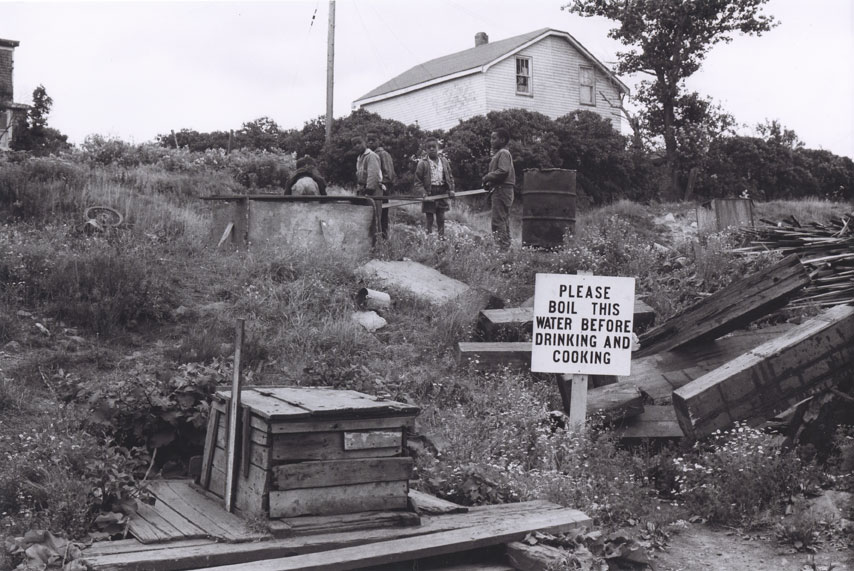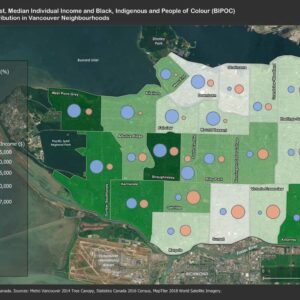Canada’s First Bill on Environmental Racism Moves Through Parliament: Why Is It Important?
This week the House of Commons Standing Committee on the Environment will continue its study of a private member’s bill, Bill C-230: An Act Respecting the Development of a National Strategy to Redress Environmental Racism. The bill is the first proposed legislation for Canada addressing environmental racism. As an organization, committed to anti-racism and the promotion of equality for Indigenous, Black and other racialized peoples, Nature Canada is working with allies to call for swift passage of this important legislation by Parliament.
“I grew up not knowing that the land, the water, was already poisoned.”
– Randy Fobister, First Nation Chief, Grassy Narrows
During the 1960s and early ‘70s, the chemical plant at the Reed Paper mill in Dryden, Ontario dumped 9,000 kilograms of mercury upstream from the Grassy Narrows First Nation into the English-Wabigoon River. This may seem like a long time ago, but mercury never goes away once ingested, it bioaccumulates and is passed from one generation to the next. Not far away, around Sarnia in Aamjiwnaang First Nation territory is the largest concentration of petrochemical plants and refineries in the country, called ‘Chemical Valley’ for the dangerous levels of toxins that pollute the air.
Further east, Northern Pulp began discharging wastewater in the 1960s into Boat Harbour, Nova Scotia. After a ruptured pipe spilled untreated effluent into a wetland in 2014, the Pictou Landing First Nation set up a road blockade, but it would be another six years before the province closed the mill in 2020.

Nova Scotia’s Africville, a community dismantled by the appropriation of Black people’s property by the state starting in the 1960s, has come to epitomize Canada’s environmental racism. Black folks were displaced by force and the area subsequently became the site for several environmental hazards including a fertilizer plant, slaughterhouse, tar factory, stone and coal crushing plant, cotton factory, prison, three systems of railway tracks, and an open dump.
Today, the African Nova Scotian communities in Shelburne and Lincolnville both attribute high rates of cancer to neighbouring landfills, dating back to the 1940s.
These examples represent only a sampling of Canada’s abismal environmental record with Indigenous, Black, and other racialized populations bearing the brunt of the burden. It is critical that the government, and all political parties in Canada, acknowledge and take meaningful steps to redress the harms of environmental racism. This is why Nature Canada joins a coalition led by Dr. Ingrid Waldron and Naolo Charles and supported by the “ENRICH Project” in advocating for the passage of Bill C-230 without delay.

If enacted, the Bill will require the Minister of the Environment and Climate Change to: examine the link between race, socio-economic status and environmental risk; collect information and statistics on the location of environmental hazards and the negative health impacts they cause; and assess the administration and enforcement of environmental laws in each province as well as how improvements to federal policy could better protect affected communities.
Bill C-230 would give a legislative mandate for the Minister of Environment and Climate Change to develop a strategy on environmental racism, and require the Minister to regularly report. This aligns with the government’s commitment to tackling systemic racism and the proposal to recognize the right to a healthy environment in the Canadian Environmental Protection Act (CEPA). It also provides an important opportunity to develop proactive policy in the long path toward truth and reconciliation.
“If you are neutral in situations of injustice, you have chosen the side of the oppressor”
– Archbishop Desmond Tutu
In the midst of a global reckoning on racial injustice, where stories of hate and genocide too often dominate the news cycle, we must come together in the important work of rooting out the legacy of discrimination and prejudice from the fabric of our country. This is by no means an easy task but we are driven by the moral imperative to right the wrongs of the past and support the critical leadership role that Black, Indigenous, and racialized communities must continue to play in the fight to save our planet.
Nature Canada hopes the parliamentary committee can complete its consideration of the bill and report it favourably before the House rises for the summer. If all goes well the committee will vote on the bill on June 21. Stay tuned for updates from Nature Canada on how you can add your voice to the growing movement of Canadians demanding that the time for Bill C-230 is now.
1Reuters, T. (2021, March 26). Canada votes to collect data to document “environmental racism.” CBC. https://www.cbc.ca/news/science/environmental-racism-data-1.5963248
2Porter, J. (n.d.). Children of the poisoned river. CBC. https://www.cbc.ca/news2/interactives/children-of-the-poisoned-river-mercury-poisoning-grassy-narrows-first-nation/
3David Suzuki Foundation. (2021, March 25). Will Biden’s focus on environmental justice spur change in Canada? https://davidsuzuki.org/expert-article/will-bidens-focus-on-environmental-justice-spur-change-in-canada/
4Addressing Environmental Racism in Black Communities in Canada. (2021, February 1). Broadbent Institute. https://www.broadbentinstitute.ca/addressing_environmental_racism_in_black_communities_in_canada



